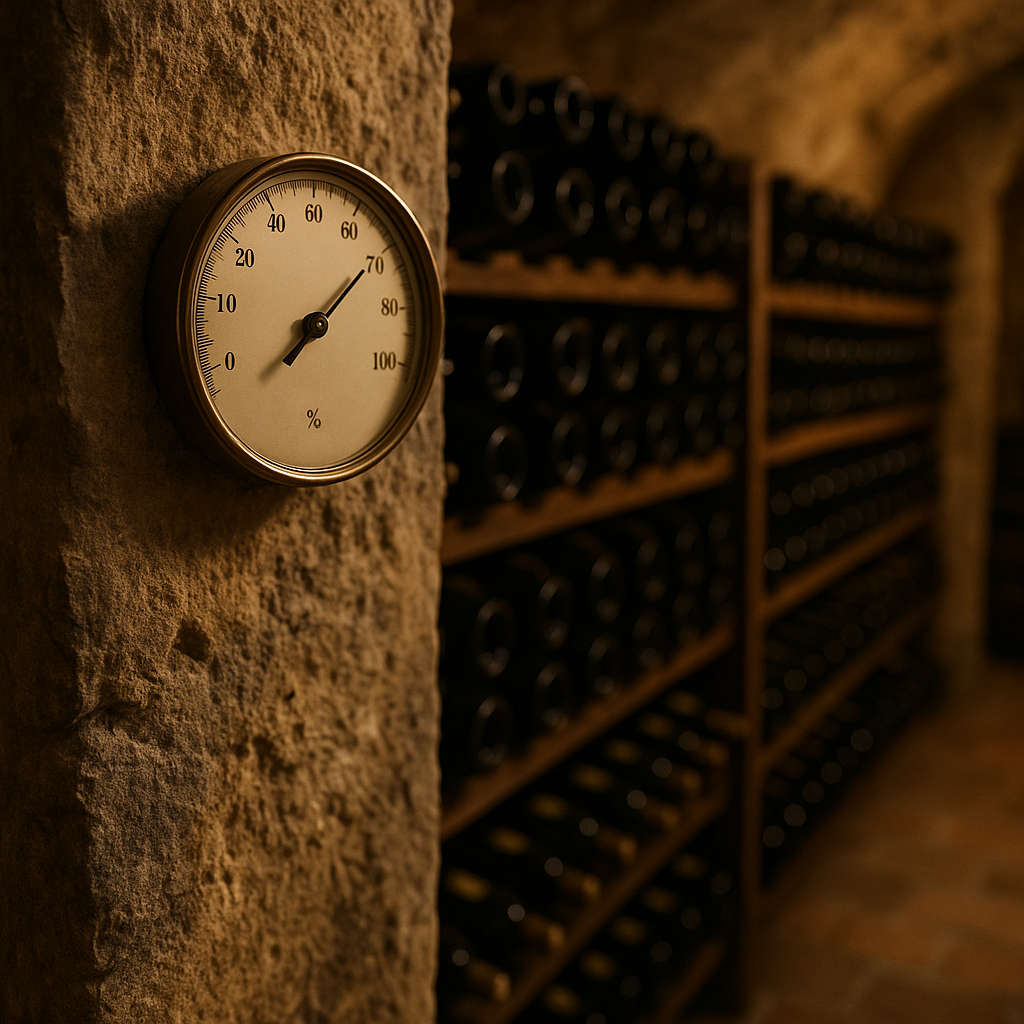
Humidity controls wine aging in cellars
Share
The Science Behind Wine Aging and Humidity
The aging process of wine is a delicate interplay of chemical reactions, and humidity plays a crucial role in this transformation. In a wine cellar, optimal humidity levels—ideally between 60% and 70%—help maintain the integrity of the cork, preventing it from drying out or becoming too saturated. A dried-out cork can allow air to seep into the bottle, leading to oxidation and spoilage, while excessive moisture can promote mold growth, jeopardizing the wine's flavor profile.
Moreover, humidity influences the evaporation rate of wine, a phenomenon known as the "angel's share." When humidity is too low, this evaporation can intensify the flavors and aromas, but it may also lead to an imbalance in the wine's composition. Conversely, high humidity can slow down this process, allowing wines to age gracefully, developing complex characteristics over time. Thus, maintaining the right humidity level is essential for preserving the wine's intended expression and ensuring a delightful tasting experience.
The Role of Humidity in Maintaining Optimal Wine Cellar Conditions
Humidity plays a crucial role in the delicate ecosystem of a wine cellar, directly influencing the aging process and overall quality of the wine. Ideally, humidity levels should be maintained between 50% and 70%. This range not only prevents the cork from drying out, which can lead to oxidation, but also helps to preserve the integrity of the wine by preventing evaporation. When humidity is too low, corks can shrink, allowing air to seep into the bottle, which can spoil the wine’s flavor profile. Conversely, excessively high humidity can promote mold growth on the corks and labels, potentially compromising the wine’s aesthetic and market value.
Moreover, the right humidity levels contribute to a stable environment, minimizing temperature fluctuations that can adversely affect the wine. A consistent climate, where humidity and temperature are carefully balanced, fosters a slow and steady maturation process. This harmony allows the wine to develop its complex flavors and aromas, ensuring that each bottle reaches its full potential when finally uncorked. Thus, maintaining optimal humidity is not just a matter of preservation; it is essential for achieving the exquisite nuances that define fine wines.
Practical Tips for Managing Humidity in Wine Cellars
Maintaining the right humidity level in your wine cellar is crucial for preserving the integrity of your collection. Ideally, humidity should hover between 50% and 70%. To achieve this, consider investing in a hygrometer to monitor moisture levels accurately. If your cellar is too dry, a simple solution is to place a shallow pan of water on the floor or use a humidifier to introduce moisture into the air. Conversely, if humidity levels rise too high, a dehumidifier can help remove excess moisture, preventing mold growth on corks and labels. Additionally, sealing any cracks or gaps in the cellar’s walls can minimize outside humidity fluctuations. Regularly checking the seals on your wine bottles is also vital; damaged corks can lead to evaporation and spoilage. Finally, organizing your wine collection can improve air circulation, allowing for a more consistent humidity level throughout the space. By implementing these practical strategies, you can create an optimal environment for your wines to age gracefully.
